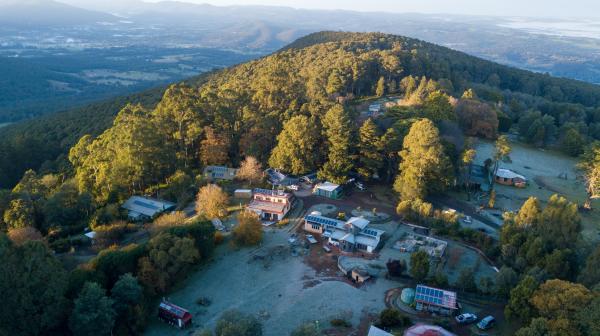
By Renee Wood
More than 180 hectares of valuable forest will now be protected forever, thanks to the Moora Moora cooperative placing a conservation covenant on its land.
The community formed in 1974 on top of Mount Toolebewong near Healesville and is home to around 60 residents who live sustainably in the 30 households and six clusters, all surrounded by forest owned by the cooperative.
Now they have partnered with Trust For Nature for the covenant and it will help guide the management of the vital land for years to come.
Moora Moora co-founder Peter Cock said the project was three years in the making, with the community and state government minister needing to agree to the covenant.
“It’s really difficult once you put a covenant on – you can’t take it off. So that means it’s permanently protected and we had to go through quite a process of negotiation and looking at the details,” he said.
The partnership will see a stewardship support system introduced, meaning the not for profit will help advise on how to manage the land for conservation.
Every three to five years assessments of the property will be conducted through flora and fauna surveys, and volunteer assistance with managing invasive species and data collecting of changes will also take place.
During the process, their path towards the infinite protection was cemented in 2020 when a Leadbeater’s Possum was spotted for the first time on the property, helping to seal the deal for the covenant’s necessity.
“That was most unexpected. One of our members spotted it first and then we bought in the zoo and our land care group put up cameras and members confirmed that we had them, now little boxes have been put up to help their breeding.”
Wombats, lyrebirds, wallabies are all home to the area, which also has 80-year-old Mountain Ash forests.
Nature conservation officer Andrew Kulhmann said they work with a lot of private land holders to create the legally binding conservation agreement that is tailored to each title.
“The most important thing is that when a covenant goes on the property, the landowner isn’t giving up any rights to the ownership of the property,” Mr Kulhmann said.
“It provides a level of restrictions on the whole or parts of the property as to what can be done or what can be changed, especially in relation to the habitat and vegetation.”
The not-for-profit is starting to see a growing interest in its conservation programs.
“Particularly around Melbourne, I think there’s an increasing amount of people that see the value of bush land that still exists in places like the Peninsula and the fringe areas of Melbourne.
“There’s a real awareness that those areas are really valuable because they are often quiet unique.”






